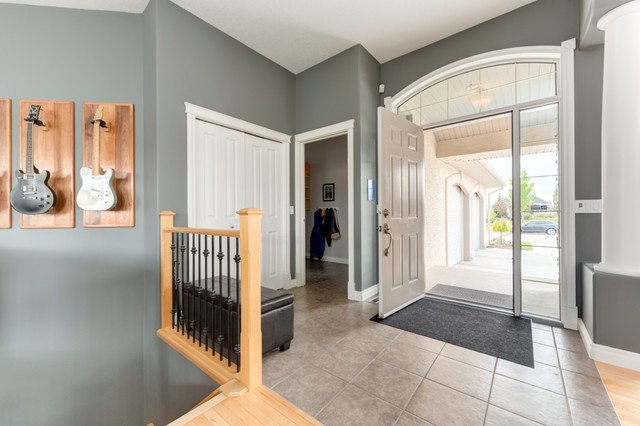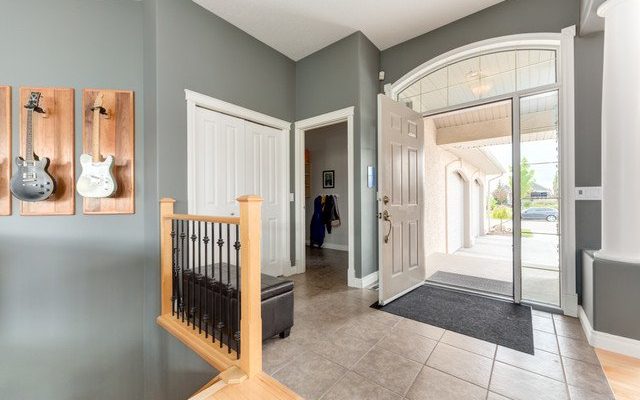
This process might feel daunting, but it’s a lot like making a recipe; you gather your ingredients and follow some simple steps. Whether you’re dealing with a standard interior door or a heavy entryway door, retrofitting is about making the right adjustments. We’ll look at everything from selecting the right hardware, like accessible door handles or automatic openers, to the tools you’ll need to get the job done.
Let’s unlock the world of accessible doors together!
Understanding Accessibility Standards
One of the first things to consider when retrofitting a door is understanding the accessibility standards in your area. These standards ensure that public spaces are navigable for everyone, regardless of physical ability. They often refer to guidelines set forth by the Americans with Disabilities Act (ADA), which outlines specific requirements for door width, hardware height, and more.
For instance, the ADA recommends that doors be at least 32 inches wide when open to a 90-degree angle. This gives enough room for wheelchairs or mobility devices to pass through comfortably. If you have an existing door that doesn’t meet this width, retrofitting may involve widening the door frame or even installing a new door altogether.
You might be wondering about the hardware too. The ADA requires door handles to be accessible, meaning they should be operable with a closed fist and without twisting the wrist. Lever-style handles are usually the best choice here.
Choosing the Right Hardware
Now that you have an idea of the accessibility standards, it’s time to choose the right hardware to go with your door. This can include anything from lever handles to automatic door openers. Here’s a breakdown of a few options:
- Lever Handles: These are simple to operate and can often be opened with the elbow or forearm, which is great when hands are full.
- Panic Bars: Perfect for emergency exits, these bars allow a quick push to open the door.
- Automatic Door Openers: For a more high-tech solution, consider installing an automatic opener that uses a push-button or remote control.
When selecting hardware, think about who will be using the door most frequently. If you’re accommodating someone with limited hand strength, a lever handle or automatic opener might be best. For heavy doors, ensure that the hardware you choose can support the weight without straining.
Gathering Your Tools for Retrofitting
Before getting started, it’s essential to gather all the tools you’ll need for retrofitting. Having the right tools makes the process smoother and helps you avoid unnecessary frustration. Here’s a handy list:
- Screwdriver: To remove existing hardware and install new components.
- Drill: Useful for creating new holes or attaching hardware.
- Level: Ensures everything is perfectly aligned.
- Tape Measure: To confirm that your door meets the required dimensions.
Having these tools on hand will save you time and keep you organized as you work through the retrofitting process.
Steps to Retrofit Your Door
So, how do you actually retrofit your door? Let’s break it down into easy steps:
1. Measure Your Space: Start by measuring the width of the doorframe and the height of the existing hardware. This will help determine what changes you need to make.
2. Choose Your Hardware: Based on your measurements and accessibility needs, select the appropriate hardware. Make sure to consider the ADA guidelines we discussed earlier.
3. Remove Existing Hardware: Using your screwdriver, carefully uninstall the current door knob or handle. Keep the screws in a safe place, as you may need them later.
4. Install New Hardware: Follow the manufacturer’s instructions to install the new hardware. If you’re installing an automatic opener, it may require additional programming.
5. Test the Door: Open and close the door several times to ensure everything operates smoothly. If it feels stiff, check to see if the hardware is installed correctly and that the door is properly aligned.
By following these steps, you’ll create a door that meets both accessibility standards and personal needs.
Troubleshooting Common Issues
Once you retrofit your door, you might encounter some common issues. Here are a few troubleshooting tips to tackle those hiccups:
– Door Doesn’t Close Properly: If your door doesn’t close properly after installation, check the alignment of the hinges. Sometimes, loosening and repositioning them can do the trick.
– Handle Sticking: If your new handle sticks, it might be a sign of improper installation or that it’s not the right fit for your door. Double-check the hardware compatibility.
– Automatic Opener Not Working: If you’ve installed an automatic opener and it’s not responding, check the battery first. If the battery is working, refer to the manual for troubleshooting steps.
Addressing these common challenges can save you time and worry, ensuring your retrofit is a success.
Testing for Compliance
After you’ve made all your changes, it’s essential to test whether your door is compliant with accessibility standards. This step is often overlooked, but it’s crucial. You can do this by:
– Using a Wheelchair: If possible, have someone test the door with a wheelchair or mobility device. This will show you how well the door functions in real-world conditions.
– Checking Handle Height: Make sure the handle is at the proper height for someone who might be sitting. This is typically between 34 and 48 inches from the floor.
– Evaluating Door Weight: If your door is heavy, ensure that the handle can be easily operated without strain. This includes checking how it feels when the door is closed.
Testing is vital to ensure the space is truly accessible.
Retrofitting a door for specific handicap accessible hardware is a meaningful way to make your space more welcoming and functional. It might seem like a lot of work at first, but by understanding the standards and choosing the right hardware, you can create a space that truly opens doors for everyone. Remember to take your time, gather the right tools, and address any issues that pop up.
When you step back and see all the work you’ve put in, it’s rewarding to know you’ve made a positive change in your community. Whether it’s for a loved one or yourself, every small adjustment counts in creating a more inclusive environment.
